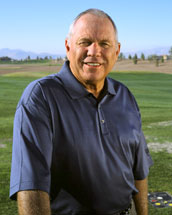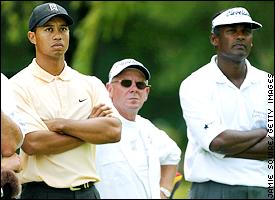 After last week’s incredibly lame “recap” show, The Big Break II resumed this week with six contestants remaining.
After last week’s incredibly lame “recap” show, The Big Break II resumed this week with six contestants remaining.
The fortunate six were split into two groups of three for a three-hole scramble. The winning team would be exempt, but the twist was that they’d be playing against a third team comprised of Garrett Garland, Randy Block and Jeff Brown from the original Big Break. “We heard some rumors that they were talking some smack about how Big Break 1 guys couldn’t play,” said Block. “It was nice to come back here and defend our honor against the Big Break 2 guys.”
The alumni team forced a playoff on the third hole, then went on to birdie the first playoff hole to send all six contestants to the mulligan and elimination rounds.
 Butch Harmon, Tiger Woods’ former instructor, is starting a souther Nevada developmental mini-tour. The “Butch Harmon Golf Tour” will begin in June 2005 and run for sixteen (16) weeks at courses in and around Las Vegas.
Butch Harmon, Tiger Woods’ former instructor, is starting a souther Nevada developmental mini-tour. The “Butch Harmon Golf Tour” will begin in June 2005 and run for sixteen (16) weeks at courses in and around Las Vegas. Tiger Woods is once again the #2 ranked player in the world. Though he may have
Tiger Woods is once again the #2 ranked player in the world. Though he may have 
 Chandler “Old Bones” Harper, PGA Championship winner in 1950 and PGA Hall of Fame inductee in 1968 –
Chandler “Old Bones” Harper, PGA Championship winner in 1950 and PGA Hall of Fame inductee in 1968 –